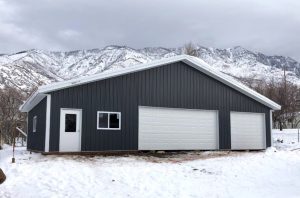I’m not talking about roofs that look “cool”. Cool roofs are the roofs which deliver both high solar reflectance and thermal emittance. Solar reflectance is the ability to reflect the visible, infrared and ultraviolet wave lengths of the sun, reducing heat transfer to the building. Thermal emittance is the ability to radiate absorbed, or non-reflected solar energy.
The benefits associated with cool roofs include reduced cooling energy load, reduced air pollution and improved human health and comfort. Cool roofs may extend the roof service life. They achieve cooling energy savings in hot summers but can increase heating energy load during cold winters.As such, the net energy saving of cool roofs varies depending on climate. Without a proper maintenance program to keep the roof material clean, the energy savings of cool roofs can diminish over time.
 While it is true cool roofs are mostly associated with white roofs, they come in a variety of colors and materials and are available for pole buildings of all uses. Today’s “cool roof” pigments allow metal roofing products to be Energy Star rated in dark colors, even black. They aren’t as reflective as whites or light colors, but can still save energy over other paints.
While it is true cool roofs are mostly associated with white roofs, they come in a variety of colors and materials and are available for pole buildings of all uses. Today’s “cool roof” pigments allow metal roofing products to be Energy Star rated in dark colors, even black. They aren’t as reflective as whites or light colors, but can still save energy over other paints.
Most of the roofs in the world (including over 90% of the roofs in the United States) are dark colored. In the heat of the full sun, the surface of a black roof can increase in temperature as much as 125 °F, reaching temperatures of 190 °F. This heat increase can cause negative effects on cooling energy use.
Cool roofs, on the other hand, offer both immediate and long-term benefits: Reduced building heat-gain, as a white or reflective roof typically increases only 10–25 °F above ambient temperature during the day; Savings of up to 15% on annual air-conditioning energy use for a single-story building; Extended service life of roofs; Improved energy efficiency of roofs, especially when there isn’t adequate insulation provided in the roof envelope; and Improved thermal comfort in buildings which do not have air conditioning.
Research and practical experience with the degradation of roofing materials over a number of years have shown heat from the sun is one of the most potent factors which affect durability. High temperatures and large variations; seasonally or daily, at the roofing level are detrimental to the longevity of roofing. Reducing the extremes of temperature change will reduce the incidence of roofing damage. White surfaces reflect more than half of the radiation which reaches them, while black surfaces absorb almost all. White roofing would appear to be the best approach to control problems where roofing is exposed to solar radiation.
In some climates where there are more heating days than cooling days, white reflective roofs may not be effective in terms of energy efficiency or savings because the savings on cooling energy use can be outweighed by heating penalties during winter. According to the U.S. Energy Information Administration, 2003 Commercial Buildings Energy Consumption Survey, heating accounts for 36% of commercial buildings’ annual energy consumption, while air conditioning only accounts for 8% in United States.
According to the Cool Roofs Rating Council and other sources, “The roof is an insignificant source for heat gain in winter. While cool roof owners may pay slightly more to heat their pole buildings, this amount is usually insignificant compared to the cooling energy savings during the summer”. Energy calculators generally show a yearly net savings for dark-colored roof systems in cool climates. The energy trade-off is therefore not clear cut. Additionally, higher R values for insulating materials in the roof assembly and snow covering on roofs can lessen the impact of roof surface color.
Choosing a roof which is not only “cool looking” but functions as a cool roof, is the way to go!






